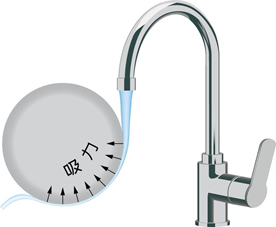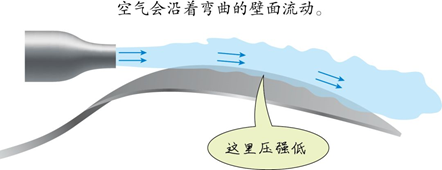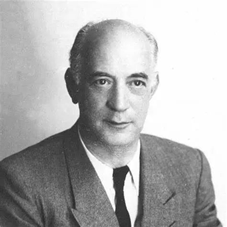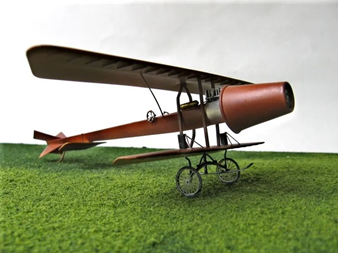 English
English Español
Español  Português
Português  русский
русский  Français
Français  日本語
日本語  Deutsch
Deutsch  tiếng Việt
tiếng Việt  Italiano
Italiano  Nederlands
Nederlands  ภาษาไทย
ภาษาไทย  Polski
Polski  한국어
한국어  Svenska
Svenska  magyar
magyar  Malay
Malay  বাংলা ভাষার
বাংলা ভাষার  Dansk
Dansk  Suomi
Suomi  हिन्दी
हिन्दी  Pilipino
Pilipino  Türkçe
Türkçe  Gaeilge
Gaeilge  العربية
العربية  Indonesia
Indonesia  Norsk
Norsk  تمل
تمل  český
český  ελληνικά
ελληνικά  український
український  Javanese
Javanese  فارسی
فارسی  தமிழ்
தமிழ்  తెలుగు
తెలుగు  नेपाली
नेपाली  Burmese
Burmese  български
български  ລາວ
ລາວ  Latine
Latine  Қазақша
Қазақша  Euskal
Euskal  Azərbaycan
Azərbaycan  Slovenský jazyk
Slovenský jazyk  Македонски
Македонски  Lietuvos
Lietuvos  Eesti Keel
Eesti Keel  Română
Română  Slovenski
Slovenski
The Coanda effect
2023-03-23
The Coanda effect
The Coanda effect of water flow

The Coanda effect is usually demonstrated using water flow, for two reasons. One is that water flow is visible, and the other is that the Coanda effect of water flow is much more obvious than that of air flow.
There is an element of deception here, because the Coandal effect of water flow in the air is similar to that of air flow, but the principle is completely different. The reason why the water flow in the air tends to the solid wall is that there is adsorption between the water and the solid, and there is tension on the surface of the water flow. The combined action of these two forces pulls the water "towards" the wall, which can be understood as the water is sucked by the solid.
We know that water has a very high surface tension, so the Coanda effect is very obvious, for example, when you pour wine, if you don't pour it fast enough, the wine will run down the side of the bottle, and the water will rotate 180 degrees, defying gravity.

The Coanda effect, which is caused by adsorption and surface tension, is not the focus of our discussion, but we are going to focus on the Coanda effect that exists in the same fluid, either gas or liquid, but there is no free surface, that is, there is no surface tension.
The Coanda effect of airflow
The Coanda effect exists in airflow as well, but unlike the flow of water in the air, there is no pull between gases, only pressure. Therefore, there is no "suction past" in the gas, the feeling of "suction past", in fact, are pressed past, the use of atmospheric pressure.
But the walls can still suck in the gas, creating the Coanda effect. Obviously, because of the low pressure near the wall, the air flow is carried over by the outer atmosphere.
Centripetal force can be used to explain the low pressure of the gas near the wall. When a gas flows along a curved wall, the flow moves in a curve, which requires a centripetal force. Since a gas has no suction, this centripetal force can only be provided by the pressure inside the gas. The air flow on the side away from the wall is subjected to atmospheric pressure, so the pressure on the side near the wall should be lower than atmospheric pressure to form centripetal force.
The Coanda effect
The Coanda effect in the flow is due to the viscosity of the gas. There is friction between the sides of the jet and the air, and this friction is caused by the viscosity of the gas. The jet is constantly carrying away the otherwise static air around it, lowering the atmospheric pressure of the environment. But that pressure drop is very, very small. How small? An air jet at a speed of 30m/s will only reduce the ambient pressure nearby by about 0.5Pa. This pressure drop is not enough to "draw" the flow to the wall, causing a noticeable Coandal effect. However, once there are walls, the negative pressure is multiplied.
When there is a wall on one side of the jet, due to the barrier of the wall, after the jet takes away part of the air, the original place can not get enough air supplement, the local pressure will be reduced, and the air flow will be pressed to the wall due to the unbalanced pressure on both sides. In other words, the air carried away by the jet is more replenished by the jet itself.
When the wall bends outwards, there is a temporary "dead zone" of no flow between the flow and the wall, assuming the flow is horizontal at first. The flowing air continuously takes away the air in the dead water area, and the jet flow gradually draws closer to the wall. Finally, when the centripetal force generated by the pressure difference on both sides of the jet flow just matches the turning degree of the jet flow, the flow reaches balance, and the jet flow flows along the curved wall.
The importance of the Coanda effect
The Coanda effect (sometimes translated as The Coanda effect) is the key to generating lift in an airfoil. Because the lift of an airfoil is mainly caused by the upper surface "sucking" air down.
Henri Coandǎ was a Romanian inventor and aerodynamicist who first made use of the Coanda effect. The invention of the airplane is the result of many people and can not be attributed to any one person, the highest honor for the practice goes to the Wright brothers, the pioneer of the theory should probably go to Coanda.

Coanda was also a pioneer of jet aircraft, and it is believed that in 1910 Coanda successfully flew an aircraft called the Coandă-1910.

The plane is not a jet with a jet engine, but it has no propeller and a thick tube at the nose that blows air. The source of the jet is a centrifugal fan, through which the air is directed to the rear to obtain thrust.
Read too much into
The Coanda effect can be used to increase the lift of aircraft, but these methods are also mixed with some pseud oscience. For example, here is a Coanda aircraft that claims to increase lift. The propeller can keep it hovering, but now it has a shell under the propeller, which claims to use the Coanda effect to drive more air down to increase lift. In fact, this is not worth the cost, because the shell generally acts as a barrier to airflow and only reduces lift.




